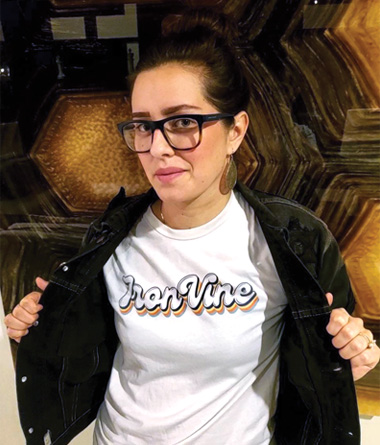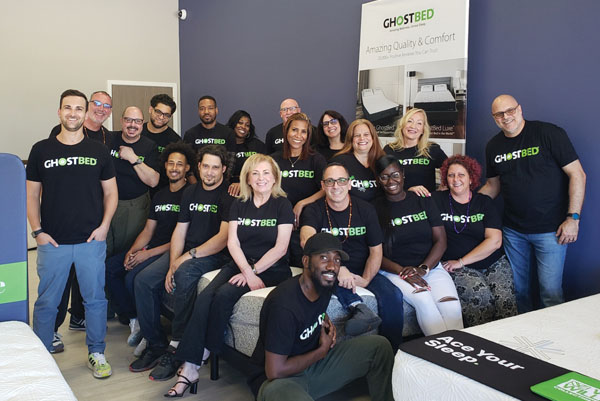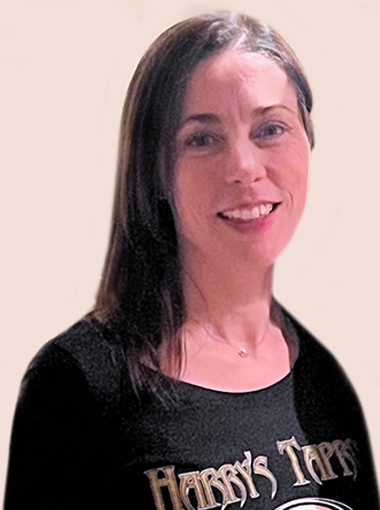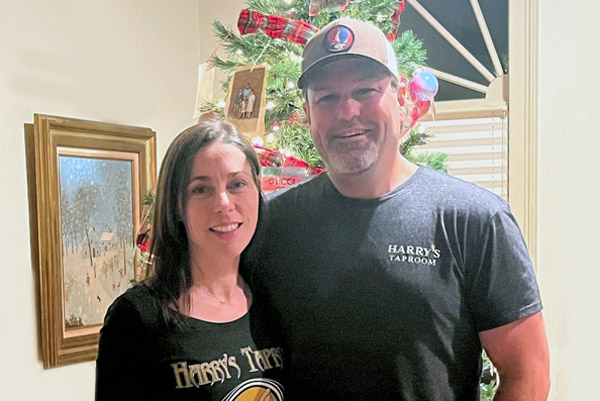As much as they might want to be, distributors aren’t mind readers. If they were, they’d know exactly what product to choose to wow the customer, or why the prospect decided to go with someone else. Business would be a lot easier.
So oftentimes, the mindset of the buyer is a mystery. But maybe it doesn’t have to be. ASI Media spoke with apparel end-buyers in five different markets (education, nonprofit, entertainment, corporate and hospitality) to find out how they use branded apparel, what garments they gravitate to most, and what they look for in a distributor. We hope the insights into these types of buyers will be useful when you’re trying to make your next sale.

Stacey Finney
Industry: Education
Title & Organization: Vice President/Board Member, Palisades Youth Basketball Association (PYBA), part of the Palisades School District
Location: Kintnersville, PA
How do you use branded apparel?
Our youth basketball association uses branded apparel for three purposes: First, we order reversible jerseys for all the players. The jerseys are purple, black and white for our school colors. They feature our school district’s name on the front. The back has the player’s number and last name.
Second, we use branded apparel as a small fundraiser for our organization. We have a web-based sports apparel store that includes items with our logo like sweatshirts, T-shirts, long-sleeve shirts, warm-up jackets, shorts, sweatpants, bags and hats. The items are optional to buy, but many players and families purchase them because they love showing their team spirit. The sports apparel store isn’t a large fundraiser for our organization, but every little bit helps.
Lastly, our organization buys branded shirts for each coach. Coaches select either a short-sleeve collar shirt or long-sleeve quarter-zip shirt. Each apparel item has our logo and the coach’s name. We believe the branded shirts help our coaches to look official when courtside at the games. It’s also a nice thank you for volunteering to coach.
“When parents and kids like, invest in, and wear our branded apparel, it enhances our organization, helps build camaraderie and raises our profile in the community.” Stacey Finney
What styles and brands do you purchase most often?
The top-selling items are sweatshirts, T-shirts, long-sleeve shirts and shorts. Players enjoy wearing the sweatshirts over their jerseys during pregame warm-ups. Adults are often seen wearing the shirts in the stands. The more common brands I’ve seen offered are Champion, Holloway, BELLA+CANVAS and Gildan. Still, it varies year to year.
What are your key considerations when purchasing apparel?
It’s important for me to provide items that the kids will like. We need good quality products, a mix of youth and adult sizes, and sizing that’s easy to understand. Products must be reasonably priced as well.
What do you look for in a distributor?
I like to use local vendors when possible. It’s crucial that the company has an online store option for ordering and payment. It’s also important that they have quality products and good design options. Initially, I like to start a working relationship with the vendors with a phone call or an in-person meeting. After that, I prefer communication through email or text messages. I get in a routine with a vendor, so if I’m pleased with the business and satisfied with the products, I’ll stick with them. In my opinion, there’s no need to reinvent the wheel, so I remain a loyal customer.
In your opinion, what makes branded apparel effective?
Branded apparel is effective if the parents are sold on the products, since they’re the ones ordering and spending the money. Parents want to buy things that kids want; kids want something that looks cool and is comfortable. Adults are also ready to buy products for themselves to show their team pride. When parents and kids like, invest in, and wear our branded apparel, it enhances our organization, helps build camaraderie and raises our profile in the community, which can help attract more kids to sign up. (Interviewed by Christopher Ruvo)

Josh Olson
Industry: Nonprofit
Title & Company: Executive Director of Angel Flight West
Location: Santa Monica, CA
How do you use branded apparel?
Angel Flight West arranges no-cost, non-emergency air travel for children and adults with severe medical conditions and other compelling needs. We encourage volunteer pilots to wear logoed apparel during flights to represent the brand and to draw attention for prospective pilots. We also buy branded apparel for events such as our annual Runway 5K and other notable charitable initiatives, with the hope that participants will wear shirts outside of the event to increase overall brand awareness.
What styles and brands do you purchase most often?
Polo shirts and hats seem to be the most popular type of branded apparel, both for the nonprofit staff and the volunteers. OGIO is the polo brand currently available on our storefront; however, we’re in the process of adding more options soon. Lands’ End has also been included and found on the storefront from time to time.
What are your key considerations when purchasing apparel?
A variety in selection and price are two of the biggest determining factors for orders.
What do you look for in a distributor?
Angel Flight West compares vendors through price, store management and the customizing options that are available.
In your opinion, what makes branded apparel so effective?
It’s having the opportunity to be recognized at airports throughout the Western states. Volunteer pilots and staff are encouraged to wear branded apparel to highlight the nonprofit’s mission and the pilots serving the mission. Positive representation is something that Angel Flight West values greatly, and its supporters are happy to pay it forward through brand awareness at every available opportunity. (Interviewed by Theresa Hegel)

Kaitlyn Urenda
Industry: Music
Title & Company: Band Manager, Deep Ellum Creative
Location: Dallas, TX
How do you use branded apparel?
I manage two bands: Mojo Brothers and IronVine. Mojo Brothers use it to make money – it’s available for sale on their website and at their shows. They also have a song called “Longshot,” so they do shot glasses with the song name on them. I started managing them recently and told them: “This is branded merch, this is your name, your brand impression. It needs to be on quality merch. It needs to be something that somebody is going to purchase, wear, love and talk about.” The purpose is to monetize it and create a brand impression.
What styles and brands do you purchase most often?
T-shirts mostly. And I like to press private label, because if you’re not private label, you’re co-branding with one of the big T-shirt brands. I’m a huge fan of T-Shirt Tycoon (asi/87000). For IronVine, we’re considering a varsity-looking jacket with patchwork, embroidery and anything else to make it look different. They’re a heavy soul band – they take old songs and put a modern feel on them. Retro look is the vibe they’re going for.
What are your key considerations when purchasing apparel?
Inventory, design and storage. Storage is where you’re going to keep it. These artists travel. Logistically does it make sense to order 2,000 shirts and carry them with you, or ship 100 to Houston, 500 to San Antonio, 200 to Austin? Usually the logistics play a key part in ordering.
What do you look for in a distributor?
We don’t have a creative director, so we lean on our distributor to help with the creative part of it. I worked as a distributor previously, and I’d get a client who would show me cool T-shirt designs because they hired a graphic artist, and they say, “We want to pay $12 for the shirt.” And I would say, “There’s a million colors on here, this isn’t printable. Whoever made this hasn’t printed before.” To keep that from happening, you have to catch them before they start throwing out T-shirt designs. I always defer to the distributor and let them tell me “This isn’t printable,” or “Let me take a crack at it.” I want them to take a consultative approach.
In your opinion, what makes branded apparel so effective?
When they started printing flyers for music acts, they said “Let’s put it on a shirt.” And they figured out how to screen print it, and that was cheap and easy to do. Think about your fan when they’re leaving. Do you want them walking out with a shot glass? Not really. You want them to just throw a shirt over their shoulder. It’s always been key in the industry because it’s easy to transport, people will wear it, and you can do it for cheap depending on how you print it and want it to look. It didn’t make sense to have 50 mugs in your band trailer. T-shirts always made sense. It wasn’t a complex thing – just put your band name on a shirt and people will buy it. (Interviewed by C.J. Mittica)

Donna Werner
Industry: Corporate
Title & Company: Chief Administrative Officer, Co-Founder & HR Director, GhostBed by Nature’s Sleep
Location: Plantation, FL
How do you use branded apparel?
Our brand is our baby, so the garments need to create a high perceived value for our most loyal brand ambassadors. We treat everyone – our employees, resellers and customers – as part of our extended family.

Donna Werner (second from left) and husband Marc (far right), founder & CEO, with their children Jeff and Ashley, part of the fifth generation of family ownership at GhostBed, and Mumu, a Cavalier King Charles spaniel.
What styles and brands do you purchase most often?
We distribute to our employees (and also sell) unisex GhostBed-branded T-shirts from Next Level Apparel. They’re made of premium 100% soft cotton and come in white or black with a silkscreened imprint. We also include them as gifts-with-purchase for new GhostBed mattress owners. They reflect our mission of “supernatural” comfort.
What are your key considerations when purchasing apparel?
Most important is the design – it needs to be something that our customers will find appealing, and it needs to reflect our brand’s image. We want it to be a quality, well-made item, just like our mattresses and pillows.

Employees at the company’s headquarters in Plantation, FL, with GhostBed-branded tees from Next Level Apparel.
What do you look for in a distributor?
We’re now a fifth-generation small family business, so we like to support fellow family businesses that have the same values as us: attention to quality and unparalleled customer service.
In your opinion, what makes branded apparel so effective?
When well-rested people wear our shirts, they become walking billboards for the GhostBed brand. (Interviewed by Sara Lavenduski)

Noelle Dever
Industry: Hospitality/Restaurants
Title & Business: Manager, Harry’s Blue Bell Taproom
Location: Ambler, PA
How do you use branded apparel?
It’s mostly for advertising purposes – it has our location. We don’t make much profit on the sale of our apparel. Everyone who works at Harry’s gets a Harry’s T-shirt. We also have a fundraiser where all proceeds go to cancer research in honor of (owner) Harry Himes’ friend who lost his father to cancer.
What styles and brands do you purchase most often?
We have a unisex tee and a women’s T-shirt. We love Bella and Next Level, and the ultra-soft comfy sweatshirts and tees. Our female employees (there’s about 20) and I like the women’s T-shirts because they’re fitted and so soft.

Manager Noelle Dever and Harry Himes, owner of Harry’s Blue Bell Taproom.
What are your key considerations when purchasing apparel?
Comfort, fit and price. On average we make three purchases a year. We have this annual Thanksgiving morning gathering, it’s drinks only, and we were going to purchase long-sleeve shirts with a color picture, but with the expedited fee, it came to $55 a shirt. We decided not to put the order in because that was ridiculous.
What do you look for in a distributor?
Harry has a very good friend who he buys shirts from. He’s been doing that for eight years now. He knows he can get them cheaper somewhere else, but he says he’ll lose a friendship if he goes elsewhere, and he doesn’t want to do that. Harry is a very loyal guy.
In your opinion, what makes branded apparel effective?
When you have the gear on, people will come up and say “Oh, I’ve been there” or “I love that place.” Harry makes cool designs – one of our previous ones looks like the Grateful Dead, and our current one has “Harry’s” in the style of the Phish logo. It’s eye-catching, the shirt itself is unique, and the majority of people who come in enjoy their experience (or at least I hope they do). We have a number of satisfied customers, and they want a memento of their experience, so they’re happy to show that they go to Harry’s. (Interviewed by C.J. Mittica)
